Showing Spotlights 513 - 520 of 2880 in category All (newest first):
 High-entropy alloys (HEAs), which are formed by combining nearly equal parts of several primary metals, are an emerging class of advanced materials that hold great potential for creating materials with superior mechanical, thermal, and catalytic properties. New research offers key insights into how HEA nanoparticles behave under high-temperature oxidizing environment and sheds light on future design options of highly stable alloys under complex service conditions.
High-entropy alloys (HEAs), which are formed by combining nearly equal parts of several primary metals, are an emerging class of advanced materials that hold great potential for creating materials with superior mechanical, thermal, and catalytic properties. New research offers key insights into how HEA nanoparticles behave under high-temperature oxidizing environment and sheds light on future design options of highly stable alloys under complex service conditions.
Oct 29th, 2020
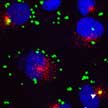 Nucleic acids offer an ideal building material for the development of therapeutic nucleic acids because they are biocompatible and can be programmed as or functionalized with antisense oligonucleotides, small interfering RNA (siRNAs), microRNAs (miRNAs), aptamers, and decoy sequence. New research shows that nucleic acid composition can be designed for enhanced stability, targeted cellular delivery, and optimal activation or abrogation of immune responses.
Nucleic acids offer an ideal building material for the development of therapeutic nucleic acids because they are biocompatible and can be programmed as or functionalized with antisense oligonucleotides, small interfering RNA (siRNAs), microRNAs (miRNAs), aptamers, and decoy sequence. New research shows that nucleic acid composition can be designed for enhanced stability, targeted cellular delivery, and optimal activation or abrogation of immune responses.
Oct 28th, 2020
 Researchers demonstrate that dust-sized photovoltaic cells grown on silicon substrate can be heterogeneously integrated with other chiplets using a high-throughput wafer-level packaging process. The ability to integrate various nanoelectronic chiplets - such as processor, memory, and photovoltaics - in an industrial-scale wafer-level-packaging process, unlocks the potential of large-scale manufacturing of these compact integrated systems with high performance and ultralow cost.
Researchers demonstrate that dust-sized photovoltaic cells grown on silicon substrate can be heterogeneously integrated with other chiplets using a high-throughput wafer-level packaging process. The ability to integrate various nanoelectronic chiplets - such as processor, memory, and photovoltaics - in an industrial-scale wafer-level-packaging process, unlocks the potential of large-scale manufacturing of these compact integrated systems with high performance and ultralow cost.
Oct 27th, 2020
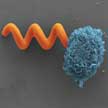 The immune system's activation of macrophages, a type of immune cells that are on the lookout for pathogens, is a major obstacle for developing functional medical microrobots that can operate in vivo for a prolonged period of time. Researchers are trying to overcome this challenge by 'camouflaging' therapeutic nanoparticles with special coatings so that they avoid detection by macrophages. In new work, researchers report the development of stealth microrobots that can fly under the radar of the immune system, and hence prolong their window of operation since they do not get eliminated.
The immune system's activation of macrophages, a type of immune cells that are on the lookout for pathogens, is a major obstacle for developing functional medical microrobots that can operate in vivo for a prolonged period of time. Researchers are trying to overcome this challenge by 'camouflaging' therapeutic nanoparticles with special coatings so that they avoid detection by macrophages. In new work, researchers report the development of stealth microrobots that can fly under the radar of the immune system, and hence prolong their window of operation since they do not get eliminated.
Oct 26th, 2020
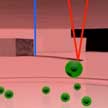 Atomic force microscopy (AFM) is one of the newer techniques available for virus research. AFM is a cantilever-based technique that utilizes a sharp tip to interrogate surfaces at resolutions well below the optical diffraction limit. Beyond imaging, AFM is also a powerful tool for nano-mechanical probing and nano-manipulation. One of the primary advantages of AFM is that it can operate on samples immersed in liquid. This empowers experiments on living cells at physiologically relevant conditions.
Atomic force microscopy (AFM) is one of the newer techniques available for virus research. AFM is a cantilever-based technique that utilizes a sharp tip to interrogate surfaces at resolutions well below the optical diffraction limit. Beyond imaging, AFM is also a powerful tool for nano-mechanical probing and nano-manipulation. One of the primary advantages of AFM is that it can operate on samples immersed in liquid. This empowers experiments on living cells at physiologically relevant conditions.
Oct 23rd, 2020
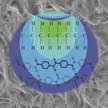 Being able to replicate the extraordinary mechanical properties of nacre and other biological structures could lead to synthetic materials that possess the exceptional mechanical properties required to perform under extreme conditions. In this context, ultrahigh molecular weight polyethylene is a high-performance specialty polymer with a unique set of properties and applications. It shows remarkable strength-to-weight ratio and an excellent energy absorption ability, making it a promising material for protective applications such as body armor, biomedical implants or heat-resistant coatings.
Being able to replicate the extraordinary mechanical properties of nacre and other biological structures could lead to synthetic materials that possess the exceptional mechanical properties required to perform under extreme conditions. In this context, ultrahigh molecular weight polyethylene is a high-performance specialty polymer with a unique set of properties and applications. It shows remarkable strength-to-weight ratio and an excellent energy absorption ability, making it a promising material for protective applications such as body armor, biomedical implants or heat-resistant coatings.
Oct 22nd, 2020
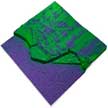 Kelvin probe force microscopy (KPFM), also known as surface potential microscopy, is one member of a suite of electrical characterization methods available in atomic force microscopes. It maps the contact potential difference between a surface and the cantilever, containing information about the surface potential and work function. KPFM is a surface-sensitive method that probes at and near the surface only. It is often used as a qualitative technique to obtain contrast based on the surface potential.
Kelvin probe force microscopy (KPFM), also known as surface potential microscopy, is one member of a suite of electrical characterization methods available in atomic force microscopes. It maps the contact potential difference between a surface and the cantilever, containing information about the surface potential and work function. KPFM is a surface-sensitive method that probes at and near the surface only. It is often used as a qualitative technique to obtain contrast based on the surface potential.
Oct 21st, 2020
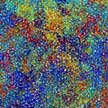 Researchers have recently demonstrated that high-intensity focused ultrasound (HIFU) is a promising, non-invasive stimulus with multiple superior and unique capabilities to induce localized heating and achieve temporal and spatial thermal effects in polymers. The team proposes a new manner of stimulating stimuli-responsive polymers. These polymers demonstrate promise for controlled drug delivery, sensing and biosensing, smart coatings, soft robotics, and flexible electronics among others.
Researchers have recently demonstrated that high-intensity focused ultrasound (HIFU) is a promising, non-invasive stimulus with multiple superior and unique capabilities to induce localized heating and achieve temporal and spatial thermal effects in polymers. The team proposes a new manner of stimulating stimuli-responsive polymers. These polymers demonstrate promise for controlled drug delivery, sensing and biosensing, smart coatings, soft robotics, and flexible electronics among others.
Oct 20th, 2020
 High-entropy alloys (HEAs), which are formed by combining nearly equal parts of several primary metals, are an emerging class of advanced materials that hold great potential for creating materials with superior mechanical, thermal, and catalytic properties. New research offers key insights into how HEA nanoparticles behave under high-temperature oxidizing environment and sheds light on future design options of highly stable alloys under complex service conditions.
High-entropy alloys (HEAs), which are formed by combining nearly equal parts of several primary metals, are an emerging class of advanced materials that hold great potential for creating materials with superior mechanical, thermal, and catalytic properties. New research offers key insights into how HEA nanoparticles behave under high-temperature oxidizing environment and sheds light on future design options of highly stable alloys under complex service conditions.
 Subscribe to our Nanotechnology Spotlight feed
Subscribe to our Nanotechnology Spotlight feed





